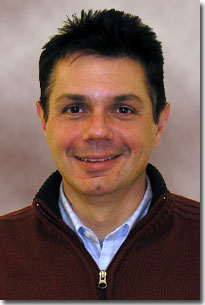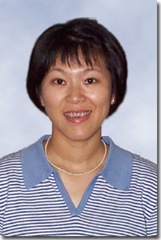Tutorials
-- Free to All Attendees --
Two HALF DAY tutorials will be held on Monday, November 5, 2012:
C4P: Communication Networks for Power Engineers
PDF version can be found here.
Monday, November 5, 2012
9:30 - 12:30
Michael Devetsikiotis (North Carolina State University, USA)
George Michailidis (University of Michigan, USA)
Wenye Wang (North Carolina State University, USA)
Abstract and Scope
The Smart Grid relies critically on communication and interaction among several devices to achieve its goals. The C4P tutorial is aimed to explain how
communication networks work and how they can be designed and employed in the Smart Grid setting. The idea is to illustrate to power engineers the potential interdisciplinary cooperation with communication technologies, based on the experience and works of the istructors.
Objective and Motivation (Plus Prior History)
The C4P tutorial is aimed to explain how communication networks work and how they can be designed and employed in the Smart Grid setting. The motivation for proposing the tutorial is to facilitate cross-fertilization and cooperation between the research fields of power and communications engineering. IEEE SmartGridComm represents the most suitable venue for this tutorial, being able to bring together experts from the two fields.
Moreover, the tutorial has prior history:
last year it was held at IEEE SmartGridComm 2011 and was positively evaluated by the attendees. Capitalizing on the previous experience, the istructors will be able to offer even a better service by having refined the programme and proposing additional sample scenarios to the audience.
Intended Audience
Especially power engineers who work in the Smart Grid context, and required to understand the current status of communication technology and how it fits the challenges and needs of the emerging Smart Grid. Given the interdisciplinary nature of the Smart Grid, knowledge about the status of research plus existing scenarios where the worlds of power and communications join efforts represent a good background for a power engineer. Starting from the tutorial material, a power engineer will be able to understand the major concepts and will be directed to related publications to learn more.
Outline
The Smart Grid relies critically on communication and interaction among several devices to achieve its goals. In this framework, to enable incremental development of Smart Grid concepts, it is required to exploit the currently available communication technologies, including fiber-optics, and powerline communications, wireless metropolitan and local area networks, wireless sensor networks. Nevertheless, current communication technologies are not designed to completely fulfill the strict requirements of the future smart grid, therefore requiring the development of novel architectures and networking paradigms, aimed at real-time control, information and data exchange to optimize system reliability, agility, asset utilization, and security.
The following topics are covered in the tutorial:
-
The smart grid: a communications perspective and vision for the future
-
Communications for the smart grid:
-
A taxonomy and basic rules of communications
-
Wired communications: fiber-optics, powerline
-
Wireless communications: WiMAX, WiFi, UWB, ZigBee, 3/4G, WSN
-
Communication standards for the Smart Grid
-
Case study: IEEE 2030
-
Modeling and design for the smart grid:
-
Basics of modeling and simulation
-
Network design for smart grid communications
-
Smart grid control and pricing for distribution and micro grids
-
Case study: Communications infrastructure for electric vehicles and charging stations
-
A Case Study: the FREEDM communication architecture
-
FREEDM overview
-
Smart Grid reliable and secure communications
-
SCADA protocols
-
Case studies, measurements, lessons, and open questions
-
Open discussion
Bios
 Michael Devetsikiotis
Michael Devetsikiotis received the Diploma degree in Electrical Engineering from the Aristotle University of Thessaloniki, Greece, in 1988, and the M.Sc. and Ph.D. degrees in Electrical Engineering from North Carolina State University, Raleigh, in 1990 and 1993, respectively. In October 1993 he joined the Broadband Networks Laboratory at Carleton University, Ottawa, Canada, as a Research Associate. He became an Adjunct Professor in the Systems and Computer Engineering Department, Carleton University, in 1995, an Assistant Professor in 1996 and an Associate Professor in 1998. Since November 2000 he has been with the Department of Electrical and Computer Engineering, North Carolina State University, Raleigh, where he has been a Professor since 2006. His research work has been in the areas of telecommunication systems modeling, performance evaluation, and efficient simulation; traffic characterization and management; and optimization techniques applied to the analysis and design of communication systems. His recent focus has been on the modeling of information networks related to social media and smart grid communications.
Michael served as Chairman of the IEEE Communications Society Technical Committee on Communication Systems Integration and Modeling and is now a member of the Communications Society Education Board. He has served as an Associate Editor of the IEEE Communications Letters, and is currently an Area Editor of the ACM Transactions on Modeling and Computer Simulation and a member of the editorial boards of the International Journal of Simulation and Process Modeling, the IEEE Communications Surveys and Tutorials, and the Journal of Internet Engineering. He co-chaired the Next Generation Internet symposium under IEEE ICC 2002 in New York, the High-Speed Networks symposium under IEEE ICC 2004 in Paris, the Quality, Reliability and Performance Modeling (QRPM) symposium under IEEE ICC 2006 in Istanbul, and the Quality, Reliability and Performance for Emerging Network Services symposium under IEEE Globecom 2006 in San Francisco. He served as Workshops Chair for IEEE Globecom 2008 in New Orleans, and co-chair of the workshops on “Enabling the Future Service Oriented Internet” (2007, 2008 and 2009). Michael recently co-chaired the QRPM Symposium under IEEE Globecom 2010, in Miami, and IEEE CAMAD, in Kyoto, Japan. He will co-chair the QRPM symposium at IEEE ICC 2012 in Ottawa, Canada.
 George Michailidis
George Michailidis received his Ph.D. in Mathematics from UCLA in 1996. He was a post-doctoral fellow in the Department of Operations Research at Stanford University from 1996 to 1998. He joined The University of Michigan in 1998, where he is currently a Professor of Statistics, Electrical Engineering & Computer Science. His research interests are in the areas of stochastic network modeling and performance evaluation, queuing analysis and congestion control and statistical modeling and analysis of Internet traffic. George Michailidis is member of the IEEE ComSoc Committee on Smart Grid Communications.
 Wenye Wang
Wenye Wang received the B.S. and M.S. degrees from Beijing University of Posts and Telecommunications, Beijing, China. She also received the M.S.E.E. and Ph.D. degree from Georgia Institute of Technology, Atlanta, Georgia in 1999 and 2002, respectively. She is an Associate Professor with the Department of Electrical and Computer Engineering, North Carolina State University. Her research interests are in mobile and secure computing, network topology and architecture, and Smart Grid. Dr. Wang is a recipient of NSF CAREER Award in 2006. She is a senior IEEE member.
Smart Metering Utility Networks (SUN) Standard – IEEE802.15.4g
PDF version can be found here.
Monday, November 5, 2012
13:30 - 17:30
Kuor-Hsin Chang (Elster Solutions, USA)
Abstract and Scope
This tutorial gives an overview of the IEEE802.15.4g standard, shows how the standard can be applied to smart grid communications and the impact of its publication, presents the important features of the standard that are critical to SUN system implementation, and discusses potential future standard work.
Objective and Motivation
The IEEE802.15.4g radio standard is a global wireless networking standard enabling interoperable communications between smart grid devices, including smart meters and smart home appliances. The publication of this new standard represents a huge leap forward in establishing common and consistent communication specifications for utilities deploying smart grid technologies.
Prior to the publication of IEEE802.15.4g, a MAC sublayer amendment - IEEE802.15.4e was published. Some of the MAC functions in IEEE802.15.4e are relevant to the implementation of the IEEE802.15.4g standard. While talking about IEEE802.15.4g, these MAC functions will be presented as well.
Intended Audience
Scholars and researchers who are interested in wireless communications for smart grid. IC designers, system implementers, and engineering management that are developing SUN related products. Application engineering and marketing/business management that are in SUN business.
Outline
The intent of this tutorial is to give a high-level overview of the IEEE802.15.4g standard and to present in-depth analysis of its important features. To achieve these goals, the following topics are covered:
-
Introduction of various wireless technologies that are used in different application domains of smart grid and illustration of how 802.15.4g applies to smart grid communications
-
The impact of the IEEE802.15.4g standard to the smart grid standardization effort
-
High-level overview of the standard
-
Important PHY functions of the standard
-
Unique options of the standard
-
Major MAC changes that are needed to support the PHY
-
MAC functions in IEEE802.15.4e that are related to the IEEE802.15.4g standard
-
Potential future standard work
Bio
Dr. Kuor-Hsin Chang is currently a Principal System Engineer of Elster Solutions working on Smart Grid standards and next generation AMI (Advance Meter Infrastructure) system development. He is also an editor of the IEEE 802.15.4g (Smart Metering Utility Network) Task Group. He was the Vice Chair/Technical Editor of the IEEE 802.15.4c Task Group which was standardized on March 2009 and has been actively involved in the IEEE 802.15 Working Group since early 2005.
Before Elster, Dr. Chang was a Sr. System Architect of Freescale Semiconductor and worked on the next generation IEEE 802.15.4/Zigbee platform. He was the system architect of Freescale’s first single-chip IEEE 802.15.4/ZigBee Platform-in-Package (PiP) solution.
Dr. Chang has over fifteen years of development/application experience in the wireless/semiconductor industry working on emerging wireless technologies such as Wireless Personal Area Network (WPAN), Smart Utility Network, CDMA/TDMA cellular, fixed-point wireless (pre WiMAX), and Wireless Local Area Network (WLAN).













